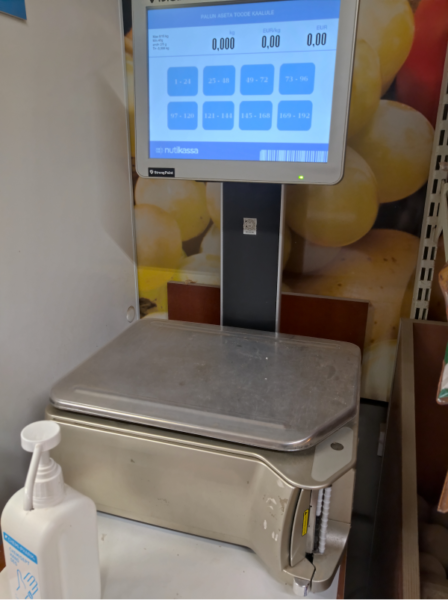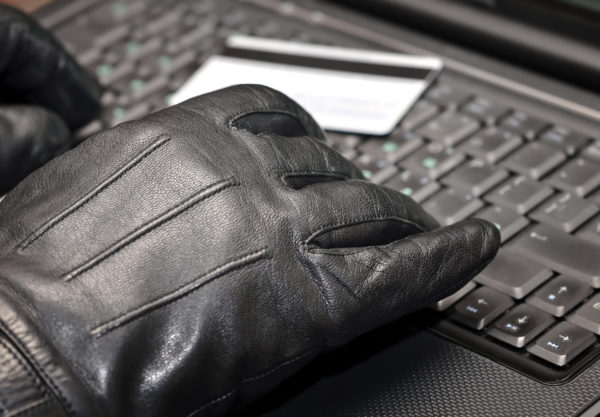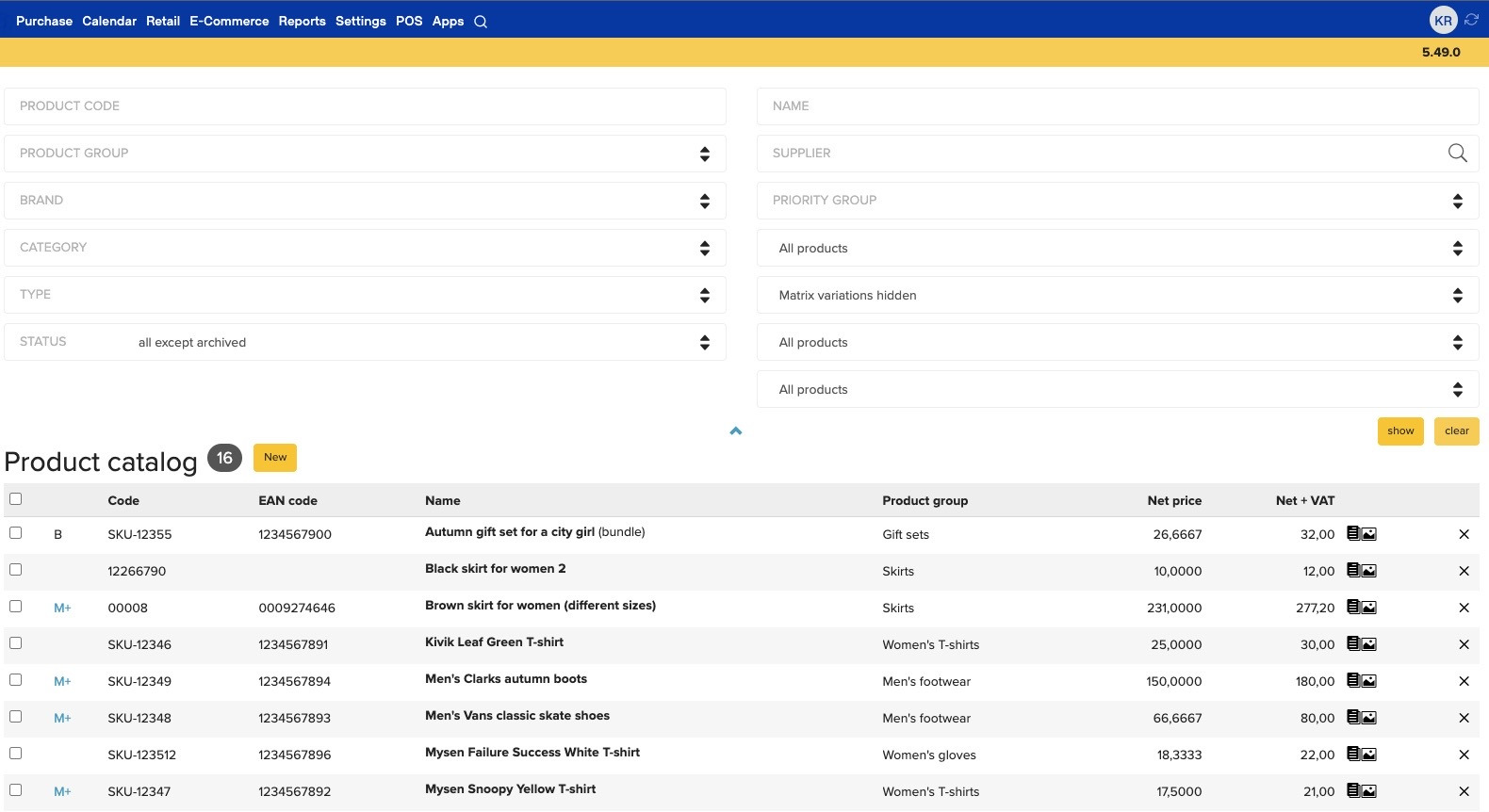You already know that first impressions matter. So whether it is a habit or a shopping trip, keeping your shop clean will elevate your customers’ experience. Keep in mind that the first impression a customer has is a direct reflection of your brand. And nothing makes customers as happy as shopping in a clean shop.
Moreover, a clean shop sends a message that you do want your client’s business. It also shows that you take pride in your business. Besides, your shop’s hygiene and health standards will save you from penalization and raise your business and property value. But to clean correctly, you need a daily cleaning checklist.
A cleaning checklist that meets your cleaning needs has the following areas to consider:
- Exits and entrances
- Store area
- Service or a checkout area
- Restrooms
- Stairways
- Storerooms or backhouse
- Back office
- Breakroom
- Kitchen or pantry
Before we elaborate on how you can clean these areas sufficiently, let’s look at the tips that will help you start cleaning.
Tips To Get You Started
De-clutter your store
Don’t start the cleaning process until you assume the eyes of the shopper. Then look at your shelves and racks. Expect Customers to pass your shop if they window gaze and find it to be dirty. Customers do not like to go through items that are not nicely displayed when they shop. And when you de-clutter, you make it easy for the shoppers to find the things they would otherwise leave. So,
- Make sure you collect every litter or garbage that is to be thrown away
- Make sure you collect and keep away any tags, paper, shelf wobblers, and empty trash bins.
Floor and carpet cleaning
The floor gets massive foot traffic in any space. This means your floors are the areas customers are more likely to identify things like gum and stain. Clean your floors thoroughly weekly. Wax or strip your laminates, clean the carpets, and any other flooring types every six months. And don’t forget to clean them daily as well.
Dusting spaces
It’s not easy to spot dust, but it builds up fast on countertops and shelves. Ensure you have excellent lighting in your shop as it will make it easy to spot the dirt. Then get a professional cleaner to get rid of all the dusty areas from top to bottom. Do this regularly without leaving the display cases, the racks, and the shelves.
Sparkling glass and mirrors
Expect to find a lot of fingertips around your shop at closing time every day. Expect dust on glass and mirror surfaces as well. So what can you do? Schedule a specific time each day to clean your store. Take special care to clean the sparkling mirrors and glass items to keep them bright. Clean glasses will give your shop a new spark of cleanliness.
Tidy breakrooms
Another critical group you haven’t thought about is your employees. They, too, love to work in a clean shop. Recognize their hard work by giving them a working area that feels clean and smells good when they are resting or working. Hire someone to wipe the shop down, take the trash out, and dust the shop often throughout the day.
Check restrooms
Now, this is one part of your shop space that you cannot afford to ignore. From unpleasant smells to the unsatisfied customer, you ought to keep your restrooms clean at all times. The only way to do this is to inspect the rooms several times in a day, no matter how busy the shop. Leaving your restrooms untidy can cost you your customers, old and new. Besides, they are excellent turnoff for people. So when you clean, make sure you touch on all areas with commercial cleaning products, clean your floors, and refill the supplies. This will keep your restrooms looking clean and smelling fresh.
Sanitization
Making sure your shop is sanitized is very important. Did you know that people carry a lot of dirt, germs, and bacteria that get transferred when they touch surfaces or other people? This mostly happens in places like door handles, restrooms, and fitting rooms. The items in the lounging areas and the register space are also susceptible.
Speaking of sanitization, it has become increasingly necessary during the coronavirus period. Therefore, paying extra attention to the cleaning details is crucial, which means you require a comprehensive cleaning checklist. With regard to sanitization, this mini-checklist will help you keep things on track with your regular cleaning and an added CDC guideline.
- Clean high tough surfaces
- Clean soft surfaces
- Disinfect correctly
- Keep the POS and electronics clean
- Clean outdoor spaces
- If someone is sick, take precaution
- Make your daily checklist routine
Clean high tough surfaces
The areas in your shop that get the most traffic are the most important to clean and sanitize. Places people touch the most are more likely to pass germs from one person to the next. These areas include:
- Handles and doorknobs
- Counter surfaces
- Toilets and sinks
- Bathroom doors
- Shopping carts and baskets
- Credit card pin pad
- POS machine

Make sure you or your cleaner has gloves on when they are cleaning these areas. Start cleaning with water and soap to kill germs and remove dirt. Once you are done, disinfect the areas to ensure effective cleaning. This should be done frequently throughout the day because the rooms are also touched often.
Clean soft surfaces
To ensure proper sanitization, ensure that you clean every apparel, window drapes, towels, chairs, carpets, couches, and rugs once every shopper is done trying them. This might be a lot of work if you have traffic in your shop, but it is a preventative measure against the possible spread of disease and germs. Use water and soap or another disinfectant cleaner to clean large items. This will keep them clean and preserve their appearance.
On the other hand, you can use a washing machine to clean and sanitize small individual items with hot water. Ensure your cleaners have gloves on every time they handle the dirty things. Try not to shake the dirty items before you clean. Don’t forget to clean the containers that contain dirty items as well. Once you are done, vacuum your rugs and carpets.
Disinfect correctly
You will get many disinfectant solutions in the market. Nevertheless, clean your shop with water and soap before you disinfect. Water and soap reduce the amount of grime and dirt, making it much easier for the disinfectant to work. So, clean your shop with a lot of water and give it a couple of minutes before disinfecting.
The water will breakdown anything that was left behind after cleaning. Always assume there is a significant amount of grime lying all over your shop because there is – so clean exceptionally before you use the disinfectant. Also, follow all the directions indicated in the disinfectant label since some can be very toxic in concentrated solutions. Additionally:
- Ensure your cleaners have gloves on
- Do not breathe in the fumes
- Always use the recommended amount of disinfectant
- Ensure you have proper ventilation
- Unless indicated otherwise, your water should be at room temperature
- Make sure all your solutions are labeled
- Do not mix disinfectants or chemicals
- Store all your disinfectants properly and safely away from children
You also have the option of getting a diluted bleach solution as long as you ensure it is meant for cleaning purposes, and you follow all the instructions correctly.
Keep the POS and electronics clean
If you have electronics at your point of sale area, then expect that region to be a garden of germs. Pos hardware and payment terminal are mostly touched here. So clean all your point of sale hardware. This includes keyboards, tablets, receipt printers, cash drawers, desktops, scanners, credit card machines, and keypads. Keep a strict schedule for cleaning these items and ensure the cleaners have gloves on every time.
A good schedule is cleaning every 15 to 30 minutes. One other way of making this area clean is by using contactless payments through modern tap and pay machines. They are convenient, fast, and they reduce the amount of hand to hand contact between cashiers and the shoppers. Just ensure the method of payment integrates well with your hardware technology.
Clean outdoor spaces
Did you know that your outdoor area is safer than your indoor area? But this doesn’t mean you should ignore the space. Give it some cleaning attention by cleaning the area with disinfectant. Clean the areas that are usually cleaned using water and soap like the outdoor seating areas, railings, or sidewalk signage. Clean and disinfect anything at your storefront that customers or passersby can touch. It will help reduce the risk of transmission. However, do not spray the area since it does nothing concerning sanitization.
If someone is sick, take precaution
It’s not uncommon for employees to fall sick once in a while. You, too, can fall ill when you are at the shop. Or a customer can walk in with sickly symptoms. If this happens, take great precaution and:
- Clean any areas that the sick person has come into contact with
- Disinfect and clean the entire shop after 24 hours
- Ensure you have more circulation of fresh air by opening the windows and doors
- Make sure any employees that came in contact with the sick person watch their help for the possible occurrence of symptoms
If you suspect the patient has a contagious disease like the coronavirus, contact local health authorities for advice on ways to proceed. Then ensure you follow all the regulations offered by the medical experts.
Make your daily checklist routine
So you have a cleaning checklist that works perfectly for you, but do you have a routine to implement it on schedule? You should always ensure that cleaning is a habit and a routine for your staff and cleaners. For instance, make sure there are frequent handwashing and mask-wearing. If any new changes are made to effect cleanliness, ensure they are continuously implemented until they become a habit.
You can start by organizing a meeting with all your employees and giving them your cleaning policy and guidelines. Don’t forget to tell them that the cleaning procedures are also for their benefit. Once you are done, print the cleaning policy and put it in an accessible place to all your employees.
Also, post your cleaning checklists in opportune spaces around the shop. Work with your shop managers and shift leaders to ensure the cleaning schedule is enforced. Then get feedback at the end of each shift, especially at the beginning of new cleaning procedures, to ensure the checklist works.
You Daily Cleaning Checklist
Now that we are talking about checklists, a good one should always be organized. This means dividing your shop cleaning into different regions and spaces. As mentioned in the introduction, you have about eight shop areas to put in your checklist. But this depends on the size of your shops and the number of spaces you have.
So when creating your cleaning checklist, start with these common areas, then add any existing spaces in your store. Make sure every region of your shop is covered so that individual listing tasks will be easy.
Make it easy for your employees as well by dividing the cleaning duties and assigning different areas. Remember, your shop is different from others, so your checklist should be customized to what you have.
Cleaning for a grocery store is quite different from that of an automotive shop. Also, consider the type of style you have in your shops, like whether you have concrete or VCT tiles. Each of these factors will affect your cleaning tasks.
So, looking for some inspiration for your cleaning checklist? Here is something you can use to start your cleaning checklist:
Exits and entrances
- Clean the glass on every interior and exterior doors and windows
- Clean every sign that is around your doorways
- Ensure you keep your exterior grounds like planters and benches tidy
- Your grounds should be free of stray trash
- Clean and then disinfect your knobs and door handles
- Your inside and outside trash should be emptied often
- Make sure you have no cobwebs on your entryway
- Clean, sweep or vacuum your doormats and entry area
Store area
- Start by dusting the shelves and arranging the display items
- Dust your décor items and fixtures
- Your furniture should be vacuumed
- Make sure your cabinets and display cases are wiped down
- De-streak and clean your mirrors, surfaces, and partitions,
- Make sure your merchandise is displayed to improve aesthetics
- Take any misplaced merchandise and place it on the correct shelves and racks
- Look for any new stains on your walls, furniture, and carpets
- Get rid of litter
- Wipe any hard surface furniture
- Mop, sweep or vacuum your floors
- Replace your liners and empty your trash cans

Service or a checkout area
- Wipe, dust, and clean your checkout counters and any areas surrounding this space
- Your display cases should be cleaned
- Remove your trash and empty your ashtrays
- Wipe and spray any of your glass surfaces
- Make sure your merchandise displays are tidy
- Remove stains and spills from your glass surfaces
- Sanitize and wipe your telephones
- Make sure your windows and their panes and sills are clean
- Clean any stains on the walls
- Organize your desks and tables by removing unnecessary papers, registers, stack magazines, and records.
- Clean and dust all your décor, switches, lights, and fixtures
- Make sure your carpet areas around and below chair and tables are vacuumed
- Your soft furniture should be vacuumed
- Clean and mop the hard floors
Restrooms
- Replace your liners and empty your trash containers
- Disinfect and wipe your fixtures and sinks
- Wipe and spray your glass and mirrors
- Disinfect and clean your urinals, seats, and toilet bowls
- Your cabinet fronts should be disinfected
- Mop and sweep your floors
- Make sure your toilet paper, soap, and paper towels are refilled
- Your drains should be unclogged
- Scrub your backsplash
- Make sure your baby changing stations are clean and disinfected
- Make sure your doorknobs and doors are sanitized
- Your faucets should be clean
Stairways
- Your trash should be clean
- Dust and then polish your banisters, ledges, and railings
- Your glass should be clean
- Vacuum, mop, or clean your landings and stairs
Storerooms or backhouse
- Replace your liners and empty your trash cans
- Clean your sills and windows
- Your air vents should be dusted
- Also, dust your fixtures, furniture, and shelves
- Your doorknobs and handles should be sanitized
- Mop and sweep your floors
Back office
- Your trash receptacles should be empty
- Your tables, desks, and chairs should be wiped down
- The back office area should be decluttered
- Your soft furniture should be vacuumed and spot cleaned
- Your glass surfaces, windows, and sill should be clean
- Make sure your light switches, telephones, and door handles are sanitized
- Vacuum, mop, or sweep your floors
- Your carpets should be vacuumed
Breakroom
- Your trash should be empty
- Make sure your dishwasher is loaded, and then start
- Then make sure your dishwasher is unloaded, and your dishes are put away
- Your sinks and countertops should be disinfected
- Make sure you clean your microwave inside and out
- Mop, sweep and vacuum the floors
- Remove any food that might be spoilt in the refrigerator
- Your appliances, cabinets, and drawers should be wiped on the outside
- Your door handles and doors should be sanitized
Keep In Mind
A cleaning checklist will tell you what you do, but you need cleaners to get your shop clean. Assess your shop to see whether your employees can do the cleaning every day. However, if your store is too big and has too much traffic, it will suffer excessive exposure to grime and dirt. In this case, you might need to hire professional cleaners to do the work for you.
Do not assume that your daily cleaning will be enough; you need to have periodic cleaning more in-depth – more on this later. Only a professional will make sure that any spots you miss during your daily routine are adequately cleaned.
Therefore, give your shop an excellent cleaning foundation by getting a professional once in a while. Then let your cleaners or employees build up on the shop cleaning every day. Now, when it’s that time to get a professional, get one with experience and knowledge to tackle all your cleaning needs.
Getting a professional is especially prudent when you are starting a shop. Why? The process of setting up your cleaning checklist will take time. Getting a professional will make the task much more comfortable to implement.
The professionals will show you how to clean, organize, and label products in the stockroom. They will also show you how to throw away the damaged products and clutter. Moreover, they can show you how to create a system where you can put return products.
Nevertheless, to get the best out of your cleaning maintenance, have a daily and monthly or yearly cleaning checklist.
Periodic Cleaning
When it comes to cleaning your shop, you have two options, assign tasks to your employees or get a professional cleaning service. Either way, you should have a system that makes sure your shop is clean every time.
The best way to do this is to organize your cleaning periodically. For instance, you can have daily, weekly, monthly, quarterly, and yearly cleaning checklists. Reserve the monthly and annual cleaning to the professionals.
These types of cleaning should be in-depth and very thorough. Here is an example of the things you should expect in your quarterly cleaning checklist, for example:
Quarterly cleaning checklist
- Your floors can be re-polished and buffed
- All your air vents will be cleaned
- Your bulbs and light fixtures will be washed out: any replacements needed will be made as well
- Any missing or chipped paint will be touched
- The professional will also take this time to revise your cleaning checklist.
Think of this phase of cleaning like a new remodel to your shop. This also includes an analysis of whether your old checklist worked and how things can be changed to improve your shop’s cleanliness. As an added advantage, you’ll get to see just how much your cleaning maintenance has affected your store sales and customer loyalty.
But what about your daily cleaning checklist? What tasks should you expect to do every day?
Your daily cleaning checklist
This is how you ensure that your shop is well cleaned, organized, and maintained every day.
- Make sure your clutter is tidied up during the day. Clutter includes things like used paper, garbage, bins, and tags
- Make sure your windows and glass doors and polished. Remember, the first thing your customer sees is your display window. If you have any marks or smudges, your unpolished look is likely to cost you some customers. So make sure you clean any present spot on your windows.
- Always sweep your floors. Focus on the areas that have the most dirt, like your door entrance. When you frequently clean these places throughout the day, you keep your store looking pleasant.
- Ensure you mop and vacuum your floors every day as well. This will enhance your presentation at the shop. You can do this every morning when you open the shop and at night when you close the shop.
- The next thing to look at is your shelves and furniture. Make sure you have them polished and dusted. You do not want your customers sneezing as they shop for products. Keep them happy by keeping your shelves clean. Use a vacuum or a clean sponge to clean your shelves.
- Do not forget your restrooms. This is a sensitive area that should keep clean at all times. We know that this is the most dreaded area by employees, but it has to be done every day, several times throughout the day. So, clean the toilets, scrub the fixtures, and wipe down the mirrors.
When washing your windows, use a mix of warm water and dishwashing liquid as a cleaning solution. Or, buy some window cleaner from the store to keep your display windows clean and smelling fresh. This is a task that you cannot afford to miss every day. Also, make sure the windows are cleaned multiple times during the day. One more tip, vinegar is an effective solution for getting stains out of your glass.
For your fixtures, use warm water and soap to scrub. Once you are done using this mixture, dry the surfaces with a towel or a cloth. In your restrooms, go for anti-bacterial spray. Let it sit for a few minutes to kill any present germs, then clean your toilet seats with a cloth. Once you are done, use a cleaner, and a toilet brush to scrub the toilet bowl.
Conclusion
Cleaning your shop will pay dividends because your customers will keep coming back for more. No customer will go back to a messy shop full of rubbish with no maintenance. Therefore, make your basic maintenance essential for your health and as a duty to your customers. You want them to have the most pleasant experience, after all.
Sign Up












